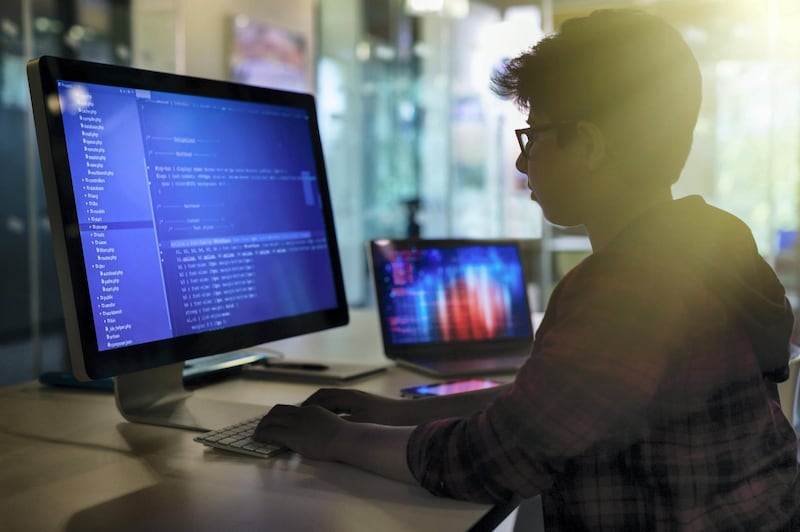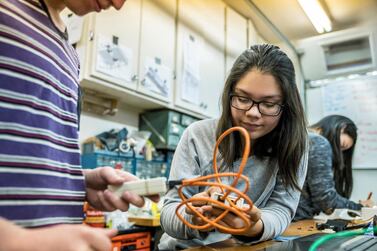What would happen if you left a group of young children in a New Delhi slum to their own devices with a computer?
The answer, as educationist Sugata Mitra discovered to his surprise, was that not only would they teach themselves how to use it, but they would also start to teach other children what they had learnt.
In another experiment, he left children with very poor English a computer loaded with a speech-to-text program. Using it they learnt to speak English properly, and improved their job prospects enormously.
Mitra began conducting what became known as the Hole in The Wall experiments in 1999, in urban and rural settings in India.
In the process he proved that “in the absence of supervision and formal teaching, children can teach themselves and each other if they’re motivated by curiosity”.
He developed an educational philosophy he calls “minimally invasive education” and two years ago founded a School in the Cloud, an online platform that allows children around the world to learn on their own, and to teach each other, using resources made possible by the technology of the internet.
Today, Mitra is professor of educational technology at Newcastle University. He is also a leading advocate of self-learning as the future of education in a world in which rapid advances in technology are disrupting expectations of work and rendering traditional forms of schooling redundant.
In part, that is the thinking behind a pilot initiative that is to be trialled at the Indian High School in Dubai from April. For one and a half days every week, some pupils in grade 11 and 12 will be allowed to choose what to study, and will be free to fill their time with academic work, sports, or arts activities.
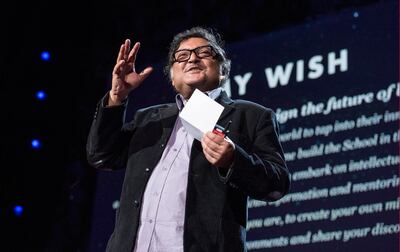
One 16-year-old has plans to return to the karate classes he had to give up because his academic work was taking up too much time. A girl, also 16, says she will use the time to resume her guitar lessons and take up sports. Another may use the time to conduct chemistry experiments.
- The beauty of the scheme will be to see where their minds, and their curiosity, lead them, and to teach them the invaluable lesson that they can apply those minds to anything that intrigues them.
- Purely academic work won't suffer under the scheme, which the Dubai Knowledge and Human Development Authority plans to roll out across other schools – school hours will be extended every day to make sure pupils still have the mandatory 30 hours of weekly classroom time.
- But it is hoped that the new flexible learning system will better equip today's schoolchildren to face the challenges of tomorrow's world, in which broadened horizons, flexibility and an ability not only to adapt to, but also to welcome the opportunities presented by the rapid pace of technological change, will be invaluable assets.
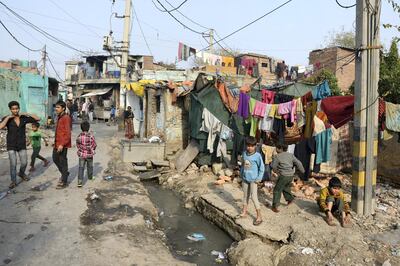
A recent study by the US Bureau of Statistics concluded that 51 per cent of all jobs in the US – and, therefore, the rest of the developed world – were at risk of being lost to automation.
Not all the roles facing replacement by robots or artificial intelligence are obvious. Shopworkers face a 47 per cent risk, but even the likes of lawyers and nurses, who both stand a 29 per cent chance of being replaced, aren’t safe from the radical changes that are coming.
McKinsey, the management consulting firm, says the world is irretrievably in transition from “science fiction to business fact”. In a 2017 study it found that half the activities people are paid to do globally could already be fully or partially automated using currently available technology.
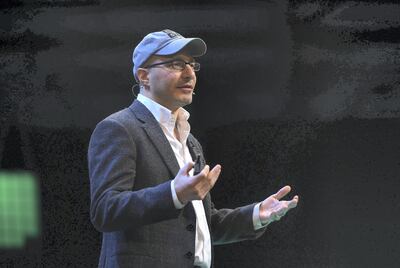
The crucial consideration for those planning education, it believes, is that while “automation and AI will lift productivity and economic growth”, along the way “millions of people worldwide may need to switch occupations or upgrade skills”.
Hadi Partovi, the CEO and founder of Code.org, an organisation dedicated to promoting the teaching of computer science in schools, says the world is "not reacting fast enough to update our system of education" to prepare pupils for the rapidly changing world of work.
Addressing the World Economic Forum’s Annual Meeting of the New Champions in September, Mr Partovi said that while automation was “much less likely to lead to the mass unemployment predicted by alarmists”, it was “almost certainly going to necessitate the redefinition of most occupations and requisite skills”.
While no-one could predict exactly what the workforce’s needs will be in the middle of the century, “we already know they are changing and will continue to change with the rate of technological advancement”.
Yet in most schools, he says, teachers continue to teach the same subjects that were taught 100 years ago: reading, writing, maths, science, history and foreign languages.
“Debates about the future of education centre on changing how we teach, to embrace technology in the classroom, but there is almost no debate about changing what we teach,” he said. “Any discussion of the future of work should go hand-in-hand with a discussion of the future of curriculum.”
Some of the subjects taught today, he believes, “will no longer be essential in the 2030s. Handwriting is increasingly obsolete, complex arithmetic is no longer done by hand, and the internet has replaced the need to memorise many basic facts".
Other leading educationists are also advocating enthusiastically for revolution in the classroom.
Emerging technologies, such as artificial intelligence, deep neural networking and machine learning “enable us to reimagine the possibilities of human creativity, innovation and productivity” wrote Vishal Sikka, an advisory professor at East China Normal University, in 2016.
And yet, while “so many of our systems have evolved beyond what we thought was possible, even 10 years ago ... we still hold on to an educational system built more than 300 years ago, when memorisation was rewarded more than curiosity and experimentation, when getting something right outweighed learning through failure”.
Talk of revolution in the classroom, or even of allowing children to spend a day and a half every week doing what they want, might sound intimidating to teachers and parents brought up in simpler, more predictable times.
But the good news, as Sugata Mitra demonstrated so comprehensively, is that we underestimate the ability of children to adapt and learn on their own terms.
Twenty years ago, Mr Mitra set himself, and his guineapig pupils, the ultimate test. Without any help, could Tamil-speaking 12-year-olds in a south Indian village possibly learn the biotechnology of DNA replication, in English, from a streetside computer?
The short and astonishing answer was yes, which bodes well for an entire generation preparing for life in a world in which radical, constant change, rather than lifelong stability, will be the norm.
